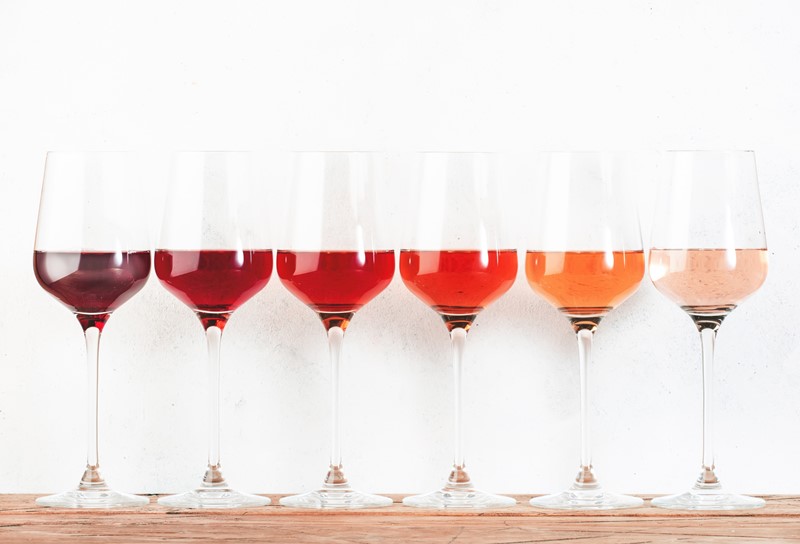The resurgence of rosé wine: a journey from ancient history to modern vineyards
The rise of rosé is more than a fad—it's a testament to the sophistication and versatility of this delightful wine, perfect for any occasion and any palate. From its fascinating production process to its ability to pair seamlessly with an array of dishes, rosé continues to surprise and delight wine lovers worldwide.

In recent times, the global wine industry has seen a significant surge in the popularity of rosé wine. This vibrant blend, hailing from the vineyards across the world – from France to California, from South Africa to Chile – offers a tantalizing selection of flavors that are appreciated by wine connoisseurs and casual drinkers alike. Renowned for its refreshing and delightful nature, rosé wine has evolved into a beloved beverage, rich in complex flavors synonymous with red grape varieties.
However, the popularity of rosé wine is not a recent phenomenon. For centuries, it has been revered for its distinct taste. This intriguing mix, widely known to encapsulate the best attributes of both red and white wines, positions itself midway between the two, providing an interesting alternative for the discerning palate.
The Art of Crafting Rosé Wine
The creation of rosé wine is an intricate process, necessitating considerable expertise and skill on the part of the winemaker. The journey begins with the meticulous selection of grapes, typically thin-skinned red grape varieties like Pinot Noir, Garnacha, or Tempranillo. The process blends techniques used in white and red wine production, making rosé wine truly unique in its creation.
After careful selection, the grapes are gently pressed to extract the juice or "must". The must is then left to macerate with the grape skins for a short duration, usually ranging from a few hours to a day, depending on the desired style of the wine. This stage, known as maceration, is pivotal in bestowing rosé wine with its characteristic pink color.
The color intensity of the rosé wine is under the winemaker's control, directly proportionate to the maceration time. Following the attainment of the desired hue, the must is separated from the grape skins and subjected to fermentation, a process in which yeast transforms the must's sugar into alcohol, resulting in a dry wine. If a sweeter rosé is the objective, fermentation can be halted early, leaving residual sugar in the wine.
Post-fermentation, the wine undergoes clarification and filtering processes to eliminate impurities or sediment. The wine is then bottled and aged for a period before being made available to consumers.

The Spectrum of Rosé Wine
Rosé wine is not a monolith but a palette of varying styles, each with its distinctive taste and character. Among the most common types are:
- Dry Rosé: The most prevalent type of rosé wine, created from red grapes that are softly pressed and macerated for a brief period before undergoing full must fermentation. The result is a dry, light wine, devoid of sugar, and ideal for pairing with a variety of foods.
- Off-dry Rosé: Similar to dry rosé, but with a slightly higher residual sugar content, achieved by halting the fermentation process before completion. This sweeter rosé is an excellent accompaniment for spicy and flavorful dishes as its sweetness helps balance out the heat.
- Frizzante Rosé: A slightly sparkling rosé wine with the fizz artificially added.
- Sparkling Rosé: This rosé variety undergoes a second fermentation in the bottle to naturally produce its characteristic bubbles. Rosé Cava is a prominent example of this wine type.
- Petillant Rosé: An off-dry, slightly sparkling rosé that undergoes a brief second fermentation in the bottle.
- Full-bodied Rosé: Crafted from red grapes that undergo a longer maceration period, this rosé type exhibits a more intense and complex flavor, almost red-wine-like. It pairs well with meats and heavier dishes.

The Color Spectrum of Rosé Wine
The spectrum of rosé wine coloration depends on the duration of maceration with the grape skins. Longer maceration times result in a more intense color, producing darker wines. The color palette ranges from very pale hues like 'onion skin' to darker tones like 'violet' or 'garnet', with intermediate shades like 'salmon', 'raspberry', and 'cherry'. The longer the grape skins' contact with the must during the pre-fermentative stage, the darker the rosé wine will become.
Food Pairing Recommendations for Rosé Wines
With its versatility and variety, rosé wine pairs beautifully with a broad range of dishes. Due to its acidity and freshness, rosé wine is particularly suited to accompany light and refreshing dishes such as salads, seafood, and fish. However, it can also complement more substantial dishes like red meats and pasta.
For different styles of rosé wine:
- Dry Rosé: Pairs well with light and refreshing dishes, including salads, ceviches, sushi, grilled fish, as well as more substantial fare like poultry, white meats, and pasta with light sauces.
- Off-dry Rosé: This sweeter wine is a perfect accompaniment for spicy and flavorful foods. It pairs well with Mexican dishes like carnitas tacos or enchiladas and Asian cuisine like curry and fried rice.
- Sparkling, Petillant, and Frizzante Rosé: These wines are perfect for sipping alone on a warm afternoon. They also pair well with light dishes like fruit salads and soft cheeses. They can accompany seafood and fish dishes, such as ceviche and sushi, and are perfect with light desserts like fruit tarts and sorbets.
- Full-bodied Rosé: This intense rosé pairs well with more substantial dishes like red and white meats, lamb, and dishes with heavier sauces. It can also be paired with stronger cheeses, such as blue and mature cheeses.

Founded in 2007, Vinetur® is a registered trademark of VGSC S.L. with a long history in the wine industry.
VGSC, S.L. with VAT number B70255591 is a spanish company legally registered in the Commercial Register of the city of Santiago de Compostela, with registration number: Bulletin 181, Reference 356049 in Volume 13, Page 107, Section 6, Sheet 45028, Entry 2.
Email: [email protected]
Headquarters and offices located in Vilagarcia de Arousa, Spain.